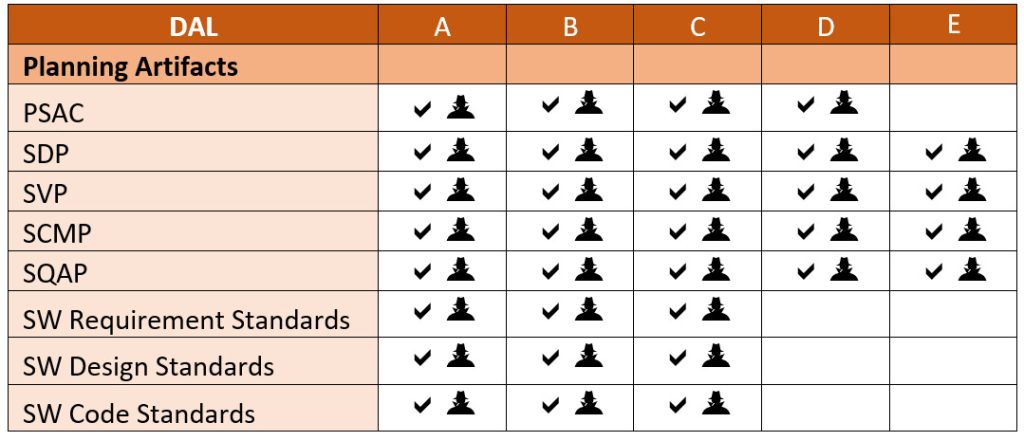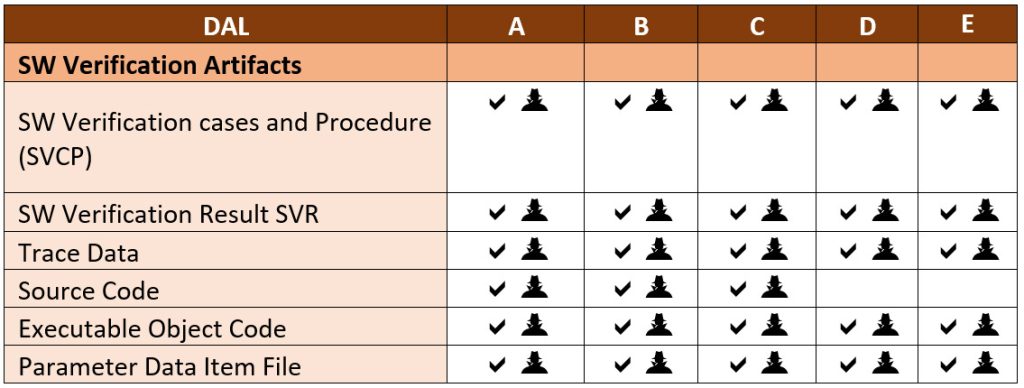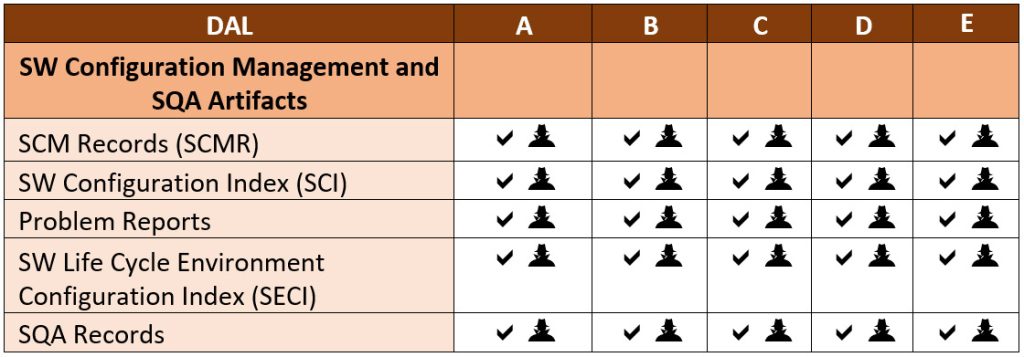Do you know which certification artifacts or software life cycle data items, per DO-178C, must be provided for various DALs?
The RTCA created the DO-178C document, Software Consideration in Airborne System and Equipment Certification. FAA AC 20-115D states that ED-12C/DO-178C is a useful approach of compliance for the software requirements of type certification (TC) or Technical Standards Order (TSO) authorization.
If we refer to DO-178C, it means that you must meet all of the requirements listed in the ED-12C/DO-178C Annex A tables, as well as, where appropriate, the ED-215/DO-330, ED-216/DO-333, ED-217/DO-332, and ED-218/DO-331 Annex A tables, for the software level (DAL A-E) that was assigned to the software.
This blog helps the end user to understand the DO-178C life cycle data (Artifacts) to be submitted for certification or needs to be developed and made available.
What Are the Software Life Cycle Data or Data Items That Are Deliverables to the Certification/Approval Authority to Support Software Approval?
As per Section 9.3 of DO-178C/DO-278A, Minimum Software Life Cycle Data that is submitted to the Certification authority is:
- Plan for Software Aspects of Certification (PSAC)
- Software Configuration Index (SCI)
- Software Accomplishment Summary (SAS)
But the Certification/Approval Authority may, at their discretion, request additional life cycle data items. Such a decision to request additional software life cycle data items is normally based upon the software levels/assurance levels (DAL) of the system and certification authority’s knowledge of the developing organization life cycle processes.
Based on the DAL (A-D) following tables help to develop the artifacts and should be available for customer/certification authority for review and release.
DAL A – Catastrophic – 71 Objectives needs to be satisfied.
DAL B – Hazardous – 69 Objectives need to be satisfied.
DAL C – Major – 62 Objectives need to be satisfied.
DAL D – Minor – 26 Objectives need to be satisfied.
DAL E – No Effect – No Safety Effect
The following tables provide an overview of the mandatory software lifecycle data for all DAL levels, including DAL E. Although DO-178B does not mandate any documents or reviews for software categorized as level E, aircraft manufacturers require a minimum level of documentation for the completed processes.
These essential lifecycle data are also enumerated in the tables below.
Note: ✔ Indicate “Required”

Table 1: Planning Phase Artifacts
PSAC – The Plan for Software Aspects of Certification (PSAC) is the principal document used by the certification authority. This document provides an overview of the system/software, the DAL assigned to the software, a summary of the development/verification environment, supplier oversight, and more.
SDP – The Software Development Plan (SDP) provides the software development procedure and software life cycle to be used to satisfy the software development process objectives.
SVP – The Software Verification Plan (SVP) is a description of the verification procedure to be used to satisfy the software verification process objectives.
SCMP – The Software Configuration Management Plan (SCMP) establishes the methods to be used to achieve the objectives of the SCM process throughout the software life cycle.
SQAP – The Software Quality Assurance Plan (SQAP) establishes the methods to be used to achieve the objectives of the SQA process. The SQA plan includes descriptions of process improvement, metrics, and progressive management methods.

Table 2: Software Development Artifacts

Table 3: Software Verification Artifacts
SVCP – The Software Verification Cases and Procedures detail how the software verification process activities are implemented.

Table 4: SW Configuration Management and SQA Artifacts
SCI – The Software Configuration Index identifies the configuration of the software product.
SECI – The Software Life Cycle Environment Configuration Index identifies the configuration of the software life cycle environment.
SCMR – The results of the SCM process activities are recorded in SCM Records.
SQAR – The results of SQA process activities are recorded in SQA Records.

Table 5: Certification Liaison Process
SAS – The Software Accomplishment Summary (SAS) is a primary data item for showing compliance with the Plan for Software Aspects of Certification (PSAC).
Disclaimer: The information provided in this blog is intended for users seeking general information on topics of interest. The information contained and accessed in this blog is provided by Einfochips Ltd. (An Arrow Company) for general guidance based on their practical knowledge and is not intended to replace any software life cycle data process (DO-178B/C). You should consult with your respective project Certification Authority/Approval/SME before making any final decisions.













